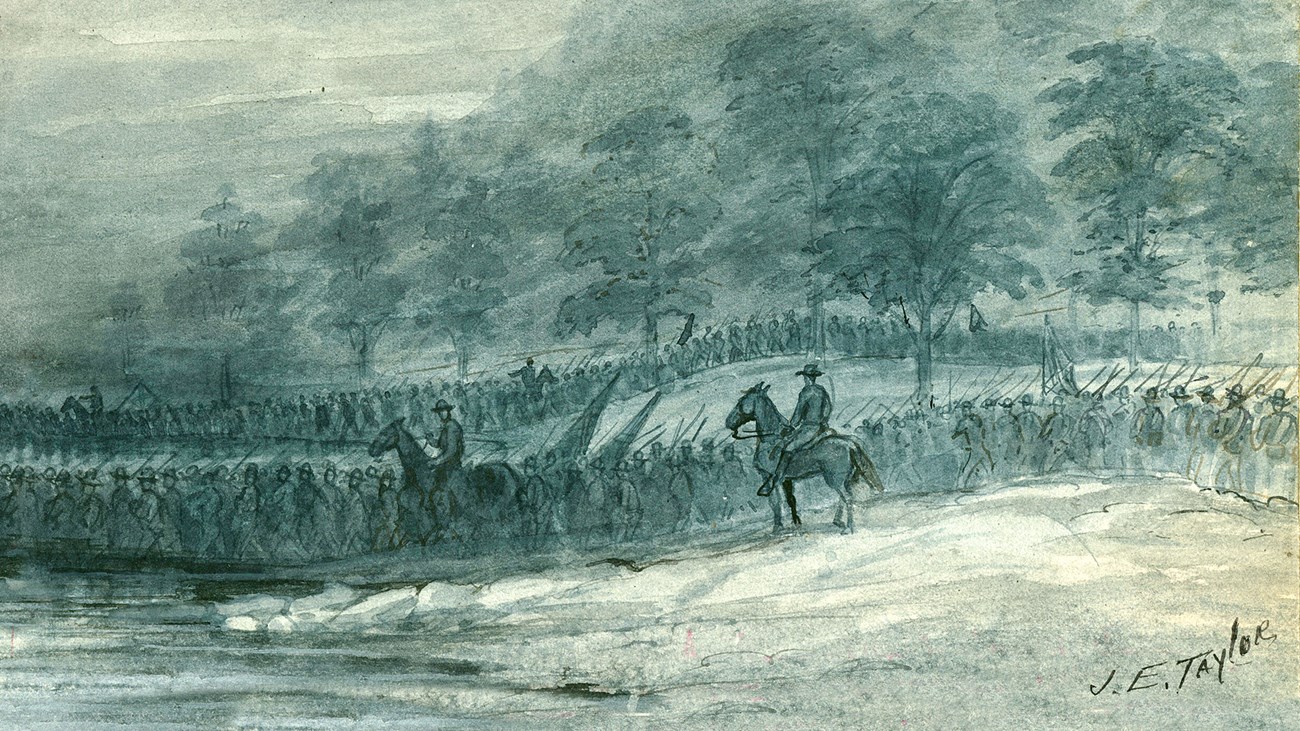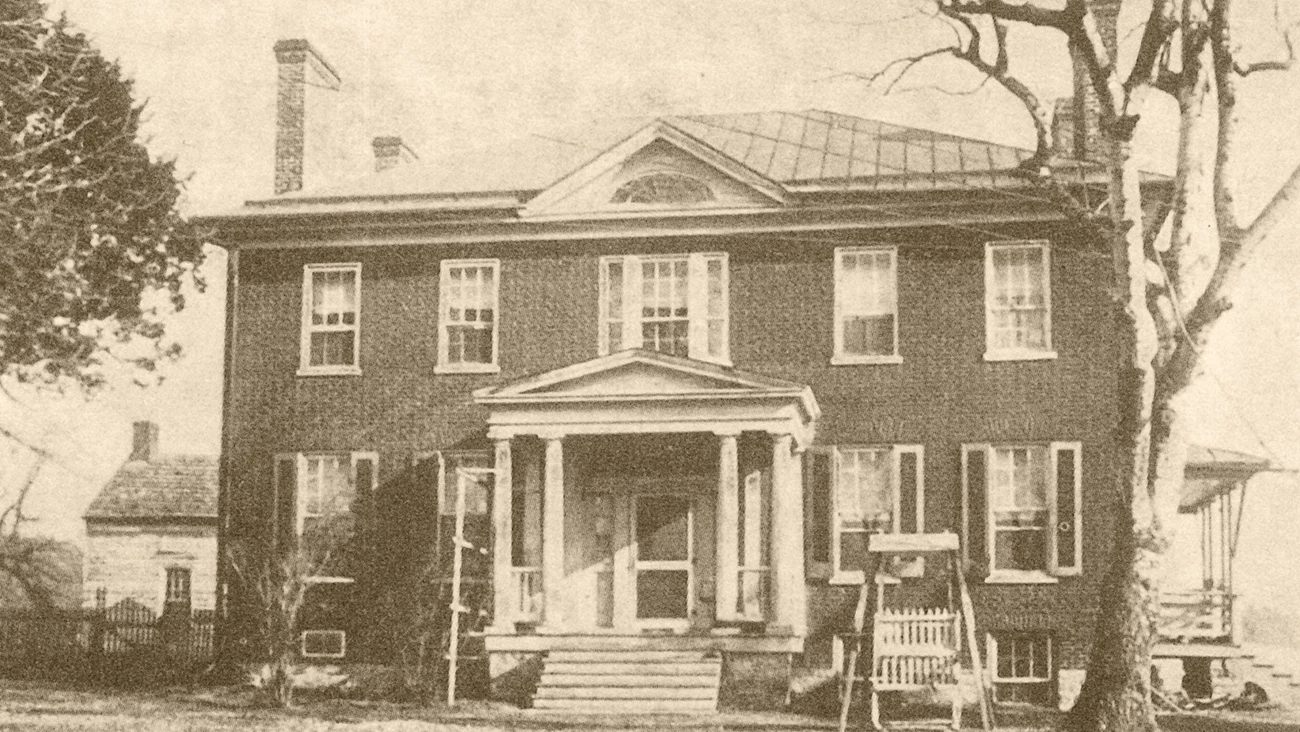Part of a series of articles titled A Victory Turned From Disaster.
Previous: Eve of Battle
Next: Silent March
Article

Sketch by James E. Taylor, an artist for Frank Leslie’s Illustrated Newspaper, 1864
“…the [men] rushed into the cold current of the Shenandoah, chilled as it was by the October nights and frosts. The brave fellows did not hesitate for a moment. Reaching the [northern] bank drenched and cold, they were ready for the “double quick,” which warmed them up and brought them speedily to the left flank of Sheridan’s sleeping army.”
—General John B. Gordon
4:30 a.m.—Two Confederate divisions crossed the North Fork of the Shenandoah and marched along the road, passing Long Meadow. They, along with General John Gordon’s division, which crossed at McInturff’s Ford (altogether approximately 7,000 strong) were to advance in conjunction with General Joseph Kershaw’s attack against the east end of the Union line and swing in on other Northern units, one of which was led by a future U.S. President, Rutherford B. Hayes. If they were successful, next they would push on, across the Valley Pike and attack the units positioned there.

Part of a series of articles titled A Victory Turned From Disaster.
Previous: Eve of Battle
Next: Silent March
Last updated: December 21, 2021